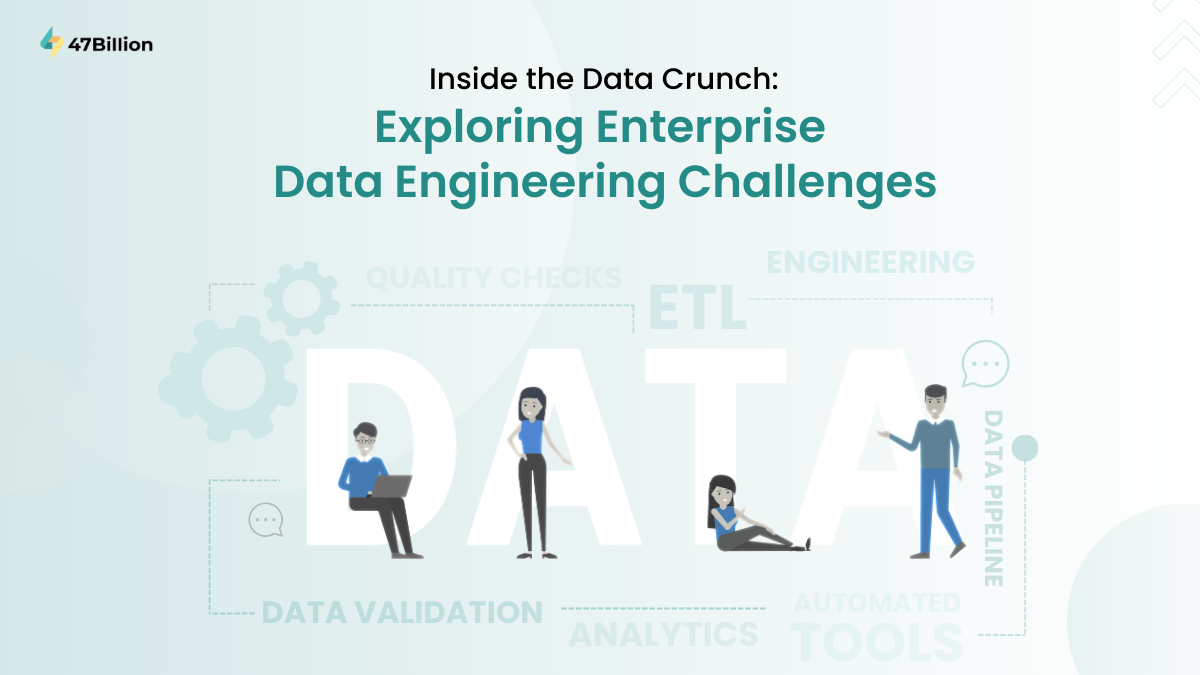Building a system that lets companies map, visualize, and optimize their business processes in real-time is a formidable technical challenge.
Data teams are critical to the success of today’s data-driven organizations. Which are made up of engineers, analysts, and data scientists.
These teams work on a range of functions that allow data optimization by all users whether internal or external. However, the dynamic nature of data means this responsibility is going to flow slowly. Today these teams encounter a multitude of challenges that can exhibit both their day-to-day operations and long-term objectives. We went to the source and found the most common data engineering challenges.
Overcoming Obstacles in the Data Engineering Sphere
Disconnect between Data Security and Data Access
The confusion around the distinction between data security and data access is a familiar thing.
Data security – A combination of processes and technology that helps protect sensitive digital information from malicious access. Also helps in protection from alteration, disclosure, or leakage throughout its lifecycle.
Data Access – on the other hand, these are the specific controls enabling authorized users to acquire and modify data for legitimate purposes.
While these measures are meant to unite, there needs to be more understanding about their relationship. A survey states that 90% of respondents agree that they can improve their understanding of the correlation between data access and data security. When data security initiatives and access controls do not work together, adequate sensitive data protection is more challenging to achieve. Not including data access in security measures leaves organizations vulnerable to leaks, breaches, insider threats, etc.
This is especially true as several companies are migrating data to the cloud. Securing data with right access rights is among the biggest challenges in the modern cloud data landscape. This presents a substantial challenge that may lead to proliferation alongside continued rapid cloud migration.
Data Quality and Governance – Ensuring Trust in Data
Ensuring data integrity at every stage of its journey is essential. Errors, discrepancies, and adherence issues can undermine the credibility of datasets, raising questions about the dependability of analytical results. To tackle this challenge, companies need to enforce rigorous data quality assessments, define transparent governance protocols, and utilize automated validation tools. Through fostering a commitment to responsible data management and continuous monitoring, the data engineering workflow serves as a protector of precision, guaranteeing that the conclusions drawn from the data remain grounded in reliability.
Scalability – Rising to the Volume Surge
Addressing the exponential surge in data volumes presents a formidable hurdle for data engineers when it comes to scaling infrastructure. Conventional architectures may need help to keep pace with the scalability requirements. The remedy lies in embracing cloud-native solutions, integrating distributed computing frameworks, and implementing horizontal scaling strategies. By harnessing the elasticity and abundant resources provided by cloud environments, organizations can achieve dynamic scalability for their data engineering setups. This not only addresses the escalating demands of big data but also establishes a resilient and agile infrastructure capable of effectively managing the complexities associated with vast data volumes.
Data Integration – Unifying Disparate Sources
For data engineers, integrating disparate data sources poses an ongoing challenge. Varied formats, structures, and standards frequently impede the smooth transmission of information along the data pipeline. To overcome this hurdle, organizations can leverage Extract, Transform, and Load (ETL) tools, implement schema-on-read methodologies, and enforce standardized data formats. These tactics simplify the integration process, enabling data engineers to harmonize diverse data sources effectively. Through strategic data integration practices, organizations can cultivate a unified data ecosystem that enhances analytical capabilities and decision-making processes.
Real-time Data Processing – Meeting the Need for Speed
Amidst the era of instantaneous decision-making, the quest for real-time data processing poses a significant obstacle for data engineers. Attaining low-latency data processing stands as a technical challenge, necessitating inventive solutions. To confront this demand, organizations can deploy stream processing frameworks, embrace in-memory computing technologies, and fine-tune data pipelines for minimal latency. Leveraging the potency of real-time insights, organizations enhance decision-making agility, ensuring competitiveness in a swiftly evolving business landscape. The amalgamation of technology and strategic foresight in real-time data processing empowers data engineers to address the imperative for rapidity and adaptability.
Cost Management – Balancing Performance and Expenditure
The scalability and intricacy of data engineering systems frequently result in escalating costs, particularly within cloud-based environments. Balancing cost efficiency with optimal performance presents a nuanced challenge. To address this, organizations can deploy cost-monitoring tools, refine resource allocation, and integrate cost-effective storage and computing solutions. Successfully achieving cost-effectiveness without compromising data processing capabilities demands a strategic approach to cost management. Through meticulous navigation of the cost-performance trade-off, data engineers can ensure that the advantages of data-driven insights outweigh the financial outlay linked with data processing and storage.
Talent Shortage – Cultivating the Data Engineering Workforce
The scarcity of skilled data engineering professionals frequently surpasses the available talent pool, resulting in a shortage in the field. Identifying individuals with the requisite blend of technical proficiency and domain expertise poses a considerable hurdle for organizations. To mitigate this talent shortage, organizations can allocate resources toward training initiatives, cultivate a culture of ongoing learning, and harness collaborative platforms. By fostering a steady stream of proficient professionals, organizations can fortify their data engineering workforce, ensuring resilience and competence. Proactive efforts in talent development guarantee that organizations possess the necessary expertise to navigate the dynamic terrain of data engineering effectively.
Conclusion
The data engineering challenges cannot be eradicated easily; rather, they serve as opportunities for innovation and improvement. By adopting solutions that align with the dynamic nature of this field, data engineers can navigate through complexities swiftly, ensuring seamless and potent utilization of data. As technology advances and the data landscape evolves, data engineers must possess both resilience and adaptability to shape the future of data-driven decision-making effectively. Collaboration between technology, strategic planning, and human expertise is crucial for driving progress in the field. Every challenge presents a chance for growth and advancement. In an ever-evolving world, data engineers play a pivotal role in bringing meaningful change, transforming challenges into stepping stones toward a future where data not only informs decisions but also enhances overall outcomes.







